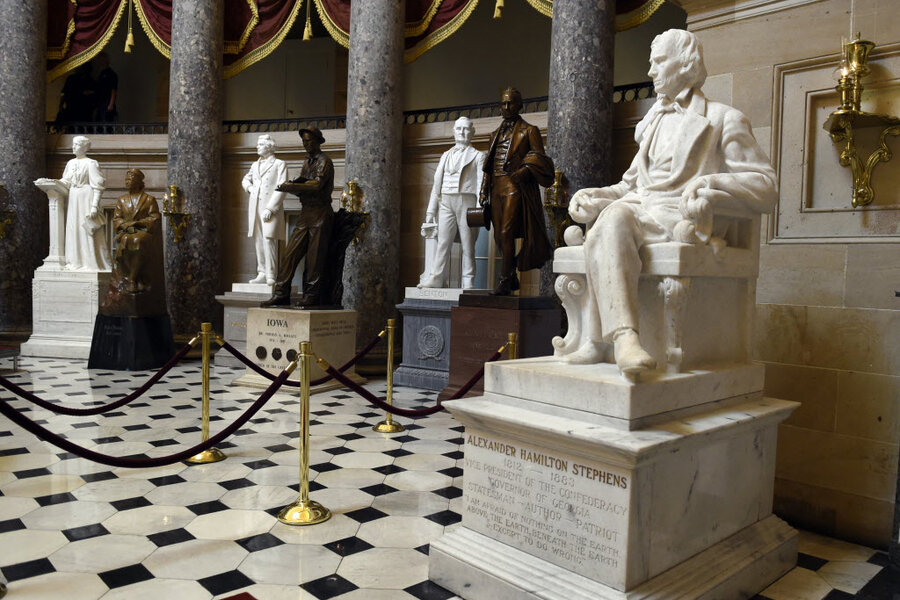Do statues of Confederate leaders belong in US capitol?
Loading...
The renewed debate about Confederate symbols that has rippled across the American South in the wake of last week's shooting in a historic black church in Charleston, S.C., is echoing beyond southern states. Now Confederate statues in the nation's capitol are part of the national race debate as well.
The push to remove the Confederate flag from state capitol grounds in southern states has prompted some members of the Congress to rethink the presence of Confederate images on Capitol Hill, including statues of former Confederate Vice President Alexander H. Stephens, Confederate Gen. Robert E. Lee, Confederate President Jefferson Davis and a number of other Confederate leaders and fighters.
"I want to see it go. I want to see it go," Rep. John Lewis (D) of Georgia told the Associated Press. Congressman Stevens was a leader during the civil rights movement in the 1960s and once served as governor of Georgia.
“Young children, school children, walk by these statues, and those of us who serve in the Congress, we have to get our own house in order ... We have to have a cleansing in this place," he added.
Not everyone in Congress agrees that the statues should be regarded the same way as the Confederate battle flag.
"He did a lot of other great things in Georgia other than being vice president of the Confederacy.” said Rep. Lynn Westmoreland (R) of Georgia. "To me it doesn't equate. The flag is a very divisive symbol that people take very much offense to."
The Confederate flag has been under fire since a gunman opened fire on during a June 17 Bible study at Emanuel African Methodist Episcopal Church in Charleston, S.C. All nine victims were black and a white supremacist has been charged with the massacre. On Monday, Gov. Nikki Haley called on South Carolina lawmakers to vote to remove the Confederate battle flag flying in front of the South Carolina State House. On Wednesday, Alabama Gov. Robert Bentley issued an executive order that brought down the Confederate flag flying on Capitol grounds.
In recent days, efforts have intensified to remove Confederate symbols from monuments, businesses, and public buildings across the South and beyond.
As Patrik Jonsson of the Christian Science Monitor wrote:
Efforts to remove controversial Confederate statues and monuments have been going on for decades, though slowly. The University of Mississippi fired its Colonel Rebel mascot in 2010 in favor of a black bear. The University of North Carolina recently changed the name of Saunders Hall, named after a Ku Klux Klan leader, to Carolina Hall.
Critics believe removing Confederate signs represents revision of history. “You’re going to try to eradicate history so that it doesn’t offend anybody. It already happened! We can’t change history,” Jeff O’Cain, a former Sons of Confederate Veterans leader, told NBC News.
But others see it from another angle. Kenneth Janken, a University of North Carolina historian, describing the post-Charleston told the Monitor, “Things can be reversed, they can be revoked. Compared to 1898, people now have a more broadly democratic idea of how power should be exercised. Why should that not be reflected in the monuments you choose to have, or the monuments you choose to retire?”
Some 10 figures in the Capitol’s National Statuary Hall Collection are of Confederate leaders, or people who fought for the Confederacy during the Civil War. Each state can submit to statues for display in Statuary hall. It is up to those individual state officials to decide whether to keep or remove them.
Apart from the Statuary Hall Collection, numerous other confederate-related statues, portraits, and busts are spread around the Capitol buildings.
This report includes material from the Associated Press.








